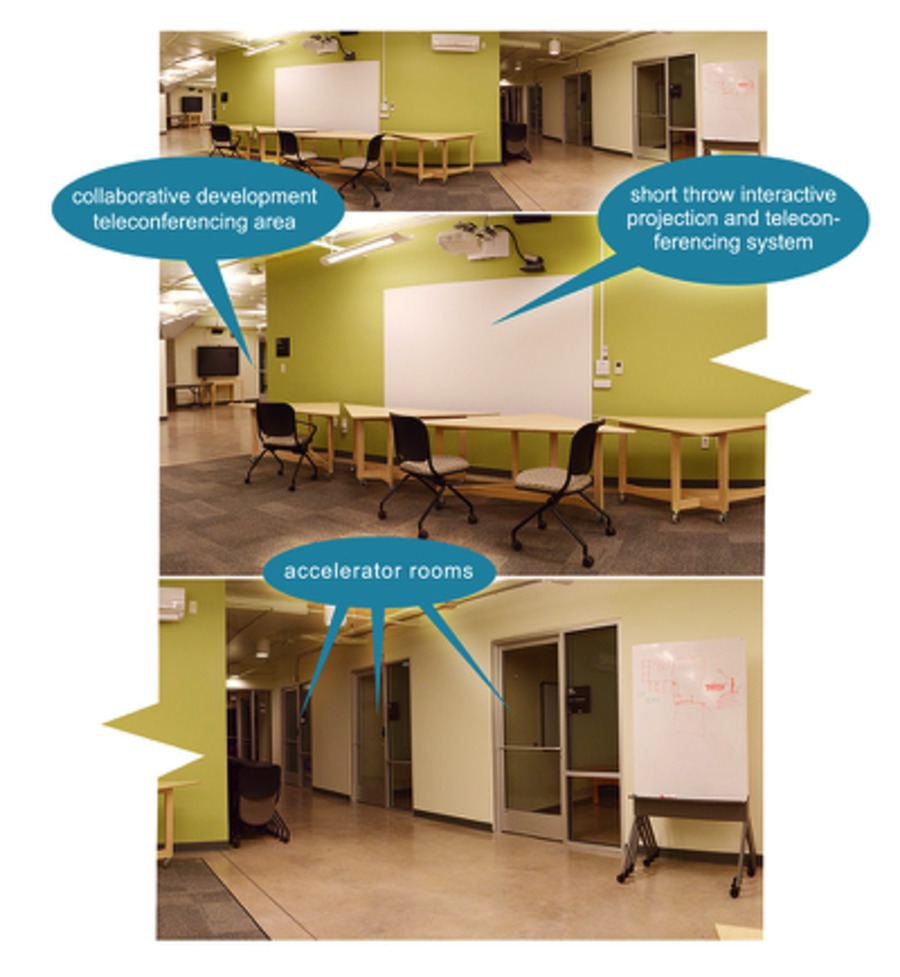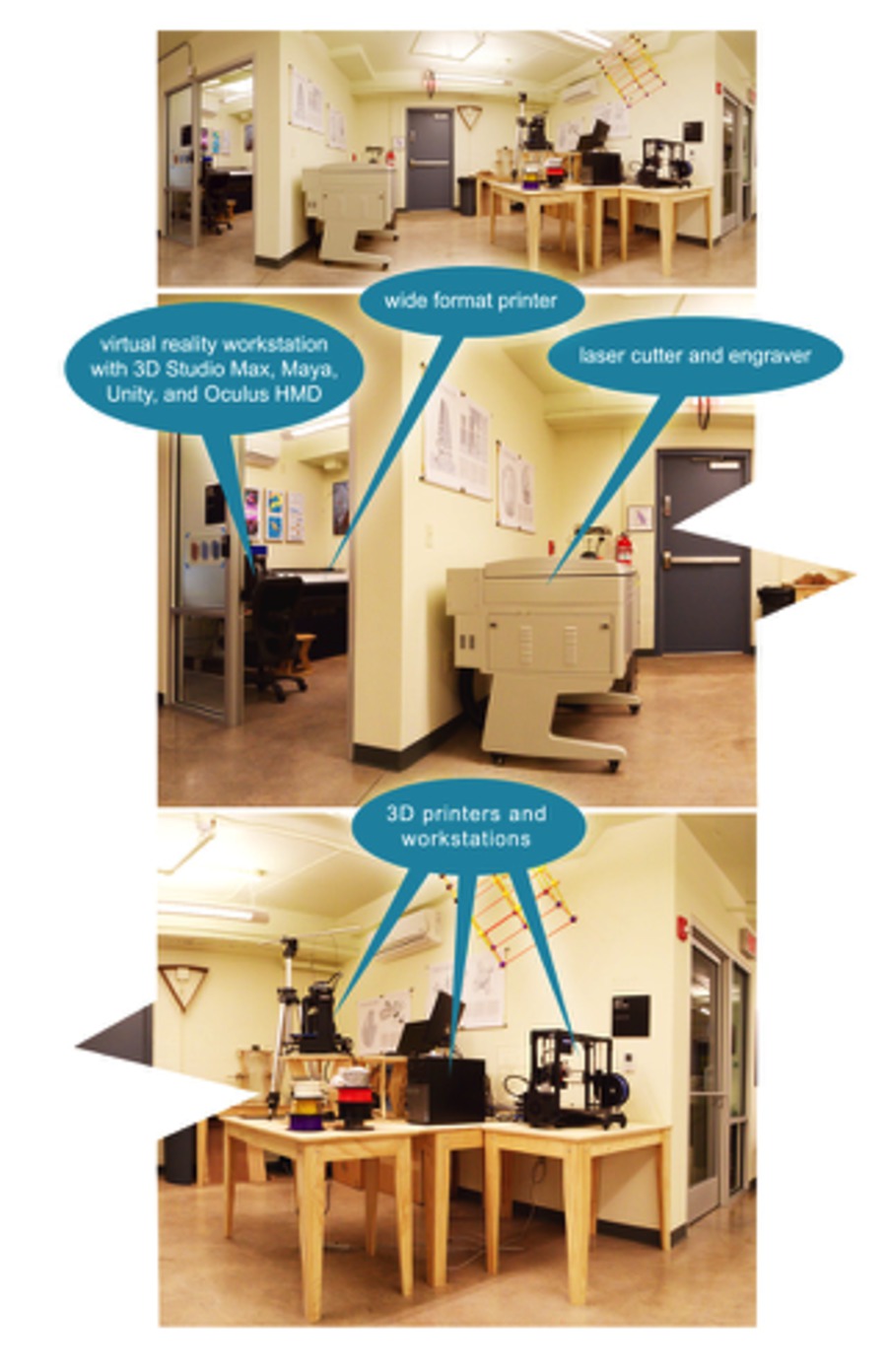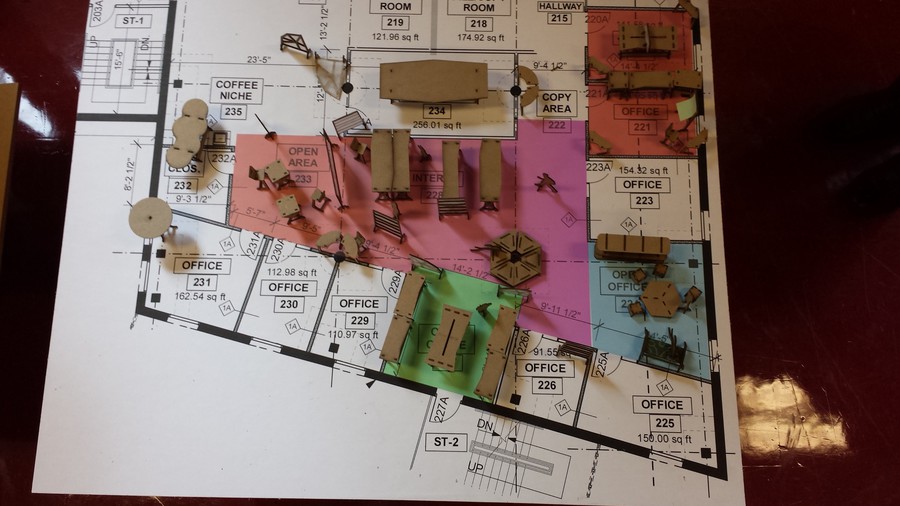Makerspace Profile
Overview
In 2012, the Center for Entrepreneurship and Technology Innovation was invited to imagine a collaborative space in the old Casco Ice building in downtown Harrisonburg, two miles north of campus. The goal was to engage students, faculty, and the community in interdisciplinary projects, specifically to generate and test ideas for future business launches. In 2013, 4-Virginia (4-VA) joined the effort by investing in the technology and staffing necessary to add prototyping, video conferencing, and collaboration capabilities to the space. The resulting ICE (Innovation, Collaboration, and Entrepreneurship) structure and Makerspace opened for business in April 2014. The future success of the project depends on continued support and collaboration of the three founding partners. Ongoing operations of the Makerspace area are funded by 4-VA.
Access
ICE welcomes faculty and students from all disciplines as well as business owners and entrepreneurs in the community. The Makerspace is available by appointment. Interdisciplinary teams of up to 20 members meet in the mornings on a weekly basis each semester. Meetup events and special topic classes are held in the evenings. Staff is available to provide support for use of the prototyping equipment upon request.
Tools, Materials and Resources
• Fused Deposition Modeling (FDM)/3D printers (Type A Machines, MakerGear, Taz4)
• Laser cutter/engraver (90 watt CO2)
• Virtual Reality (VR)
o Oculus Head-mounted display (HMD)
o Unity 3D integrated development environment (IDE)
o Dell heavy duty workstation-class computers
o Structure 3D scanners
o Xbox One for Windows
• Wide-format inkjet printer
Access & Usage Costs
Currently, there are no fees or charges assessed for the use of the space. Consumable materials, other than 3D printer filament, are provided by the individual users. 4-VA provides the funding to maintain the materials and equipment.
Management
Inventor in Residence Tom Wilcox maintains an office adjacent to the Makerspace, providing instruction and advice to students and faculty while hosting off-hours public instruction and maker events for area residents. Tom oversees the equipment and Meetup events, using his background in game design, asset development, programming, and engineering to initiate innovations, collaborations, and prototype development. Kai Brokamp coordinates reservations for the Makerspace.
Training
Ongoing development of experiential certification programs for the equipment and machinery are currently available to JMU faculty, staff and students.
Use and Activity
Since its inception one year ago, the ICE Makerspace has seen significant traffic for an off-campus facility. The big draws are 3D printing, laser cutting, and virtual reality. Curiosity drives much of the traffic and we are developing plans for hackathon-style create-athons, think-athons, and invent-athon events, planned exhibitions, and tours. Ad-hoc demonstrations take place almost daily for makers, educators, and a number of interested VIPs.
On a day-to-day basis, Tom Wilcox acts as an emissary and guide to the maker community, fielding questions, observations, and declarations. Within a few weeks of opening, Tom worked with several faculty members who had ambitions to create marketable product prototypes. Two of those products are now in the final phase of pre-production design and development. One design collaboration has already earned Tom and his partner a competitive innovation award through JMU Technology Innovation.
In 2014 ICE hosted MadHack, a full-scale, 24-hour hackathon, facilitating creative, collaborative software development.
In 2015 the Makerspace hosted its first Meetup Event called Let’s Design Board Games, where students, faculty and neighborhood professionals conceptualized game design.
During Spring Semester 2015 the engineering, nursing, and biology departments used the space to debut an interdisciplinary class called Medical Innovations.
Culture and Community
Still in its first year of operation, the ICE Makerspace is too new to claim cultural impact, but it does serve as a model for interdisciplinary makerspaces on campus. ICE hosts a number of competitions and events and has helped several people transition their ideas into working prototypes. 4-VA provided grant funding for two academic courses in the space—both focused on creative problem-solving. Two student startups are working in the College of Business’ adjacent Innovation Accelerator offices and accessing prototyping and IP expertise as they build their ventures. Our goal is to foster a culture of creativity, innovation and entrepreneurship through multidisciplinary collaborations.
Challenges and Lessons Learned
Makerspaces are new to institutional risk managers and safety personnel. It’s important to bring them into the planning process so they feel comfortable with the inherent risk as well as the mitigation measures needed to make the facility viable.
The current space is in a mixed use facility—mixing office space and makerspaces created some friction, but everyone is dedicated to working together.
The training and expertise required to use the prototyping equipment limits access.
The sounds and odors generated by some of the equipment creates issues with co-workers in offices on the same floor.
Making everyone aware of this neutral space for building prototypes requires consistent, ongoing effort.
Advice to other Makerspaces
The space needs to be student-focused and led, but staffed by a real maker who can teach, coach, mentor, and push students to pursue excellence.
It needs to be dedicated space so that faculty, students, and community members don’t feel like intruders. They need the freedom to make a mess and a lot of noise.
Hire a full-time maker or a company that provides maker expertise to generate more activity and a higher level of involvement. The maker must support the university, not a program.


